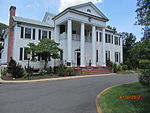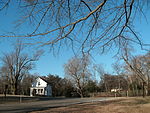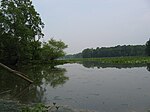Fort Hunt High School

Fort Hunt High School was a public secondary school near Alexandria, Virginia from 1963 until 1985, when it was converted to a middle school. Constructed at a cost of $2.5 million, Fort Hunt High opened its doors at 8428 Fort Hunt Road in 1963, toward the end of the post–World War II baby boom, as part of the Fairfax County Public Schools.The school suffered $4.5 million in fire damage as the result of arson on December 30, 1978, when two seniors at the school and a 1978 graduate threw Molotov cocktails into the building. The fire resulted in the forced relocation of 1,700 students who were sent on a split shift to nearby Groveton and Mount Vernon High schools through the remainder of the 1978–79 school year. In 1985, due to declining enrollment, and after contentious political and legal battles to keep the school open, Fort Hunt was combined with Groveton High School to form West Potomac High School, located on Groveton's campus. The Fort Hunt campus was converted into Carl Sandburg Middle School, which replaced the older Stephen Foster and Bryant Intermediate Schools. A large community of Fort Hunt High School alumni remains active online, organizing regular all-school and all-year reunion gatherings, and granting annual scholarships to graduating seniors of West Potomac High School.
Excerpt from the Wikipedia article Fort Hunt High School (License: CC BY-SA 3.0, Authors, Images).Fort Hunt High School
Fort Hunt Road,
Geographical coordinates (GPS) Address Nearby Places Show on map
Geographical coordinates (GPS)
| Latitude | Longitude |
|---|---|
| N 38.728222222222 ° | E -77.057722222222 ° |
Address
Fort Hunt Road 8415
22308
Virginia, United States
Open on Google Maps











